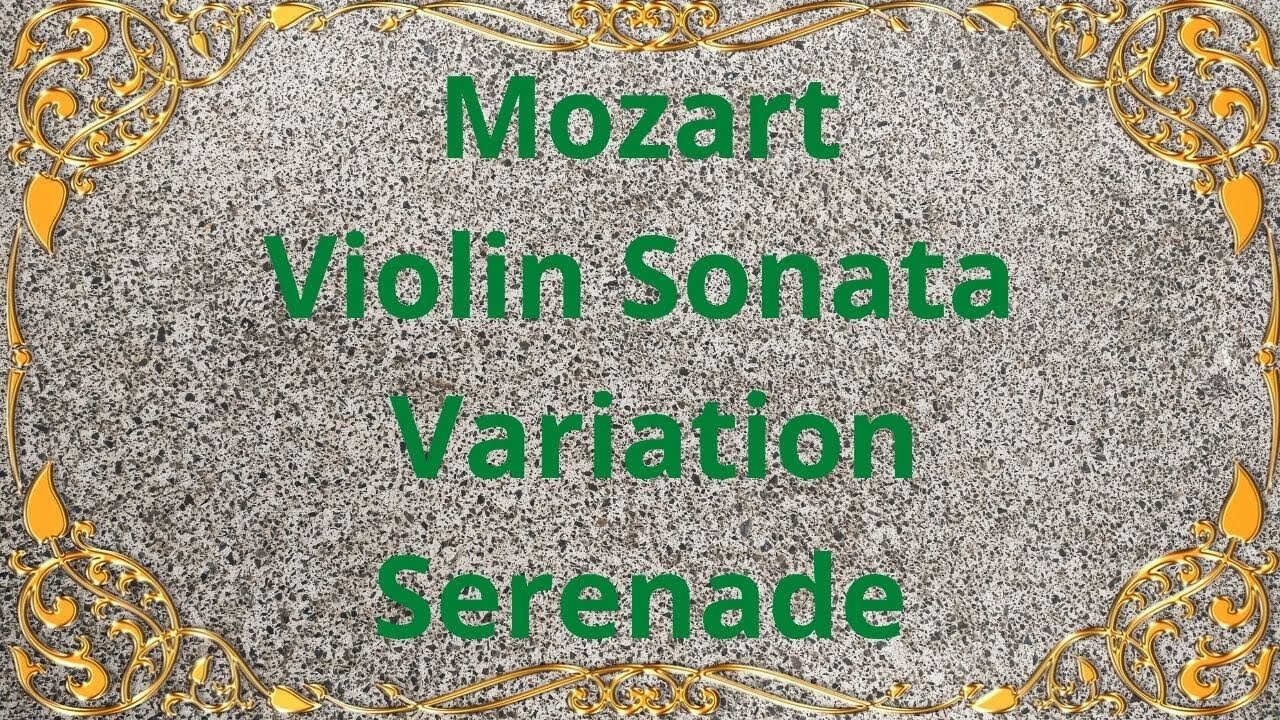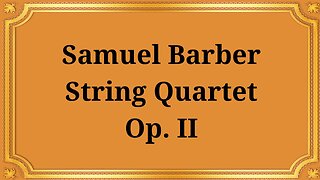Premium Only Content

Mozart Violin Sonata, Variation, Serenade
Mozart, the legendary composer of the Classical era, left an indelible mark on the world of music with his exceptional talent and boundless creativity. In this informative essay, we embark on a captivating journey through five remarkable musical pieces by Mozart. From the serene and elegant Violin Sonata in G major, K.11, to the enchanting Serenade No. 13 for strings in G major, K.525, we delve into the intricacies of each composition, discovering the genius of Mozart along the way.
Mozart Violin Sonata in G major, K.11:
The Violin Sonata in G major, K.11, showcases Mozart's prodigious skill as a composer at the tender age of six. Composed in 1764, this early work demonstrates Mozart's ability to craft melodic lines that exude grace and charm. The sonata comprises three movements: Allegro, Andante, and Allegro. Each movement captivates listeners with its delightful interplay between the violin and piano, reflecting Mozart's innate sense of balance and harmony.
Mozart Variation on Hélas, j'ai perdu mon amant KV 360:
Mozart's Variation on Hélas, j'ai perdu mon amant KV 360 presents a unique glimpse into his mastery of composition. Written in 1781, this variation for solo piano showcases Mozart's skillful manipulation of the original theme, exploring various musical textures and moods. The piece exhibits a perfect balance of technical virtuosity and emotional depth, captivating listeners with its intricate harmonies and expressive phrasing.
Mozart Maurerische Trauermusik KV477:
The Maurerische Trauermusik KV477, or Masonic Funeral Music, is a solemn and contemplative composition written by Mozart in 1785. Composed for the funeral rites of two prominent Freemasons, this piece conveys a sense of mourning and reflection. Through its rich orchestration and mournful melodies, Mozart evokes a profound emotional response, touching the depths of human sentiment and reminding us of the transience of life.
Mozart Quintet in G Minor:
Mozart's Quintet in G minor is a masterpiece of chamber music. Composed in 1787, this work showcases Mozart's profound understanding of ensemble writing. The quintet, scored for two violins, two violas, and cello, is structured in four movements: Allegro, Menuetto, Adagio, and Allegro. The interplay between the instruments, coupled with Mozart's inventive melodies and harmonies, creates a rich tapestry of sound, drawing listeners into a world of profound musical expression.
Mozart Serenade No. 13 for strings in G major, K.525:
Commonly known as "Eine kleine Nachtmusik," Mozart's Serenade No. 13 in G major is one of his most popular and beloved compositions. Written in 1787, this serenade for string orchestra consists of four enchanting movements: Allegro, Romanze, Menuetto, and Rondo. Its lively and spirited melodies, combined with Mozart's exceptional craftsmanship, have made it an enduring favorite among audiences worldwide.
From the early Violin Sonata in G major to the beloved Serenade No. 13 in G major, Mozart's compositions continue to captivate and inspire listeners with their elegance, emotional depth, and sheer musical brilliance. These works serve as a testament to Mozart's unparalleled talent, leaving an indelible mark on the history of music for
1. Mozart Violin Sonata in G major, K.11 00:00
2. Mozart Variation on Hélas, j'ai perdu mon amant KV 360 09:06
3. Mozart Maurerische Trauermusik KV477 17:53
4. Mozart Quintet in G Minor (first movement) 25:49
5. Mozart Serenade No13 for strings in G major K.525 34:05
#classical_music #Mozart #Sonata #Variation #Serenade
-
 16:45
16:45
Classical music_Music Inspiration
13 days agoSamuel Barber String Quartet, Op. II
552 -
 LIVE
LIVE
Matt Kohrs
10 hours agoMASSIVE Market Swings Incoming! || Top Futures & Options Trading Show
905 watching -
 LIVE
LIVE
Wendy Bell Radio
4 hours agoIt's All About the Benjamins
7,027 watching -
 LIVE
LIVE
JuicyJohns
1 hour ago $0.01 earned🟢#1 REBIRTH PLAYER 10.2+ KD🟢
177 watching -
 DVR
DVR
Times Now World
3 hours agoLIVE: NATO Chief Demands 5% of GDP for War Chest! Mark’s Bold Plan for Allies at IISS Prague Defence
6.1K1 -
 LIVE
LIVE
LFA TV
2 hours agoLFA TV ALL DAY STREAM - THURSDAY 9/4/25
6,420 watching -
 1:16:35
1:16:35
JULIE GREEN MINISTRIES
2 hours agoLIVE WITH JULIE
58.6K102 -
 LIVE
LIVE
Welcome to the Rebellion Podcast
13 hours ago $0.04 earnedDon3po is Live - WTTR Podcast Live 9/4
178 watching -
 13:43
13:43
The Kevin Trudeau Show Limitless
23 hours agoClassified File 3 | Kevin Trudeau EXPOSES Secret Society Brainwave Training
54.2K9 -
 LIVE
LIVE
The Chris Salcedo Show
13 hours ago $0.08 earnedAmericans Are Tired Of Leftists & Fake-GOP Who Cater To Them
507 watching